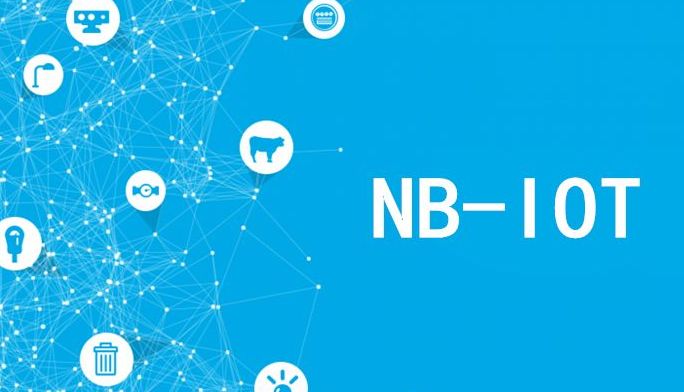
There are many types of IoT wireless access technologies, including short-distance communication technologies (such as Zigbee, WiFi, and Bluetooth), and long-distance wireless communication technologies (such as LoRa, SigFox, eMTC, and NB-IoT). Among them, the low-power wide-area technology LPWA favored by the industry includes both wide-area unlicensed spectrum technologies LoRa and SigFox, as well as eMTC and NB-IoT for licensed spectrum.
So, what is the NB-IoT?
Let’s view its introduction.
The Concept of NB-IoT
NB-IoT refers to the Narrow Band Internet of Things technology, a low-power wide-area (LPWA) network technology standard based on cellular technology for connecting various smart sensors and devices using wireless cellular networks. Focusing on the low-power wide coverage (LPWA) Internet of Things (IoT) market, it is an emerging technology that can be widely used worldwide.
NB-IoT technology can be understood as a “simplified version” of LTE technology, and the NB-IoT network is modified based on the existing LTE network.
The LTE network serves “human” services for mobile phones and services for consumer Internet services; while the NB-IoT network serves “materials”, services for Internet of Things terminals, and services for the Internet (Internet of Things).
The NB-IoT uses the license band to be deployed directly on the GSM network, UMTS network, or LTE network, and coexists with the existing network to reduce deployment costs and achieve smooth upgrade.

The Features of NB-IoT
- Low power consumption
NB-IoT focuses on small data volume and small rate applications, so the power consumption of NB-IoT devices can be very small, and the battery life can be greatly improved from the past few months to several years.
- Less cost
NB-IoT is based on the technology of LTE network. Therefore, if it is modified on the basis of the existing LTE network, it can be quickly networked and the coverage will be expanded soon. At present, major operators are still vigorously promoting the construction of LTE networks, which is also conducive to the improvement of NB-IoT coverage.
- Strong connection
In the case of the same base station, NB-IoT can provide 50-100 times the number of accesses than existing wireless technologies. One sector can support 100,000 connections, supporting low latency sensitivity, ultra-low device cost, low device power consumption, and optimized network architecture.
- Wide coverage
NB-IoT has strong indoor coverage and 20dB gain over LTE, which is equivalent to an increase of 100 times coverage area. Not only can it meet the wide coverage needs of rural areas, but also for applications such as factory areas, underground garages, and manhole covers that require deep coverage.

The Development of NB-IoT
According to the market data, in 2017, Huawei Haisi launched the first NB-IoT chip in Boudica120, which has accumulated 20 million shipments, while other domestic NB-IoT chip manufacturers have a total shipment of no more than 10 million.
From the development status quo, as of the end of May this year, there are 84 NB-IoT network commercial (GSMA) in the world, and there are more than 100 types of global modules, making it one of the most widely used IoT technologies in the world.
The number of domestic NB-IoT users has reached 30 million. At the same time, domestic consumer-grade IoT hardware sales are expected to exceed $300 billion in 2022, with a compound annual growth rate of over 20%.
The NB-IoT market is still undecided, and upstream and downstream manufacturers in the industry chain want to seize this market opportunity and get a share of the NB-IoT market.
However, NB-IoT still faces many problems and challenges such as exaggerated performance indicators, poor network coverage, problems in business models, and impetuous attitudes. It is the main reason for the NB-IoT market expansion.
In order to further promote the development of NB-IoT, domestic operators are vigorously deploying NB-IoT base stations. In 2019, China is expected to build 900,000 NB-IoT base stations, and more than 1.5 million NB-IoT base stations will be built by 2020. By 2025, the NB-IoT base station will reach 3 million.
In addition, many worldwide operators have also supported NB-IoT. Vodafone, Deutsche Telekom, Softbank and other dozens of operators have deployed NB-IoT commercial networks. T-Mobile has also announced the commercialization of NB-IoT, which is operated globally. Business pioneers AT&T and Verizon are also actively pursuing commercial trials of NB-IoT.
For the future direction of NB-IoT, it is foreseeable that NB-IoT will coexist with existing networks. When the industry walks into the 5G era of the Internet of Everything, NB-IoT will also usher in new development opportunities.
Learn More:
11 Protocols of IoT You need to know
9 Benefits that 5G Can Provide while 4G Can’t
9 Concepts and 2 Principles that New to Telecommunication Need to Know





